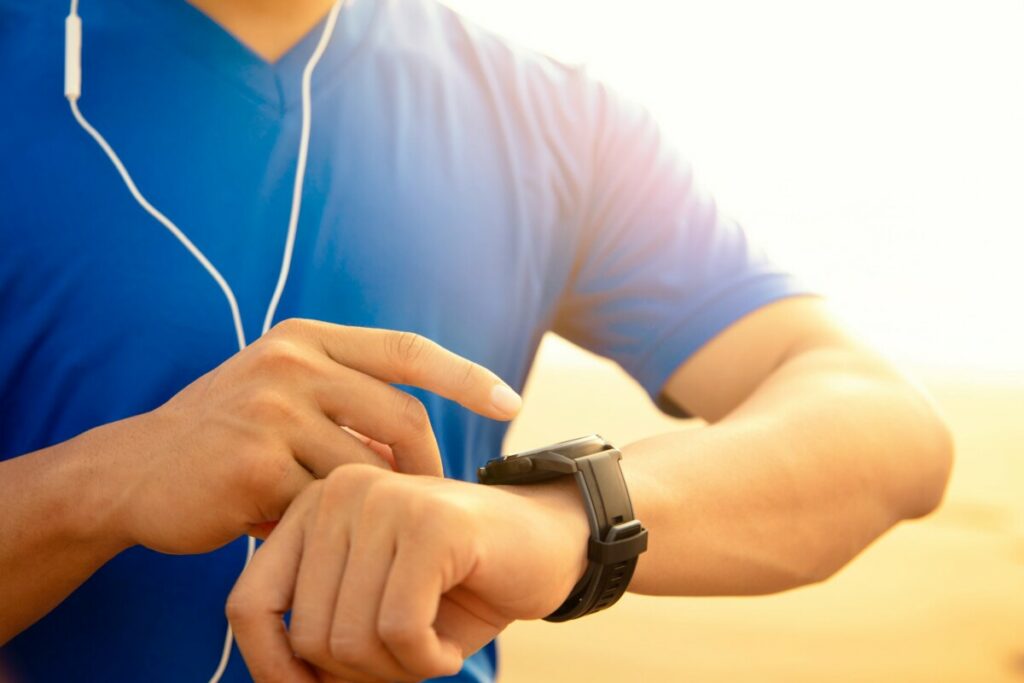Here’s How Garmin Calculates VO2 Max (Explained!)
When you get your new Garmin watch, you might be overwhelmed by all the numbers and stats that it provides you. One common one that you might see, or people may ask you about is “What is your VO2 Max”? If you are new to running or biking, you might not be familiar with what this means or why it is important for you to know.
Garmin calculates the VO2 Max score by recording heart rate and pace and uses these numbers to determine the stress on the body. For running, VO2 Max is roughly 3.5 times activity speed (km/h). Comparing this to heart rate determines a person’s fitness level. The equations vary between activities.
While this might seem a bit complex, there really isn’t much that goes into calculating your VO2 Max. Here are a couple of things that can help you ensure that you are getting an accurate VO2 measurement, as well as some tips to get the most out of your VO2 Max.

What Goes Into Your VO2 Max Calculation
There are a couple of different things that will go into your VO2 Max calculation. The first thing that you should know is that your Garmin watch can only estimate your actual VO2 Max score.
Since the VO2 measures how effectively your body can bring in and process oxygen, the most accurate way to get this score is in a lab, where researchers will have you run on a treadmill with a mask to capture the air you exhale while running.
In absence of a lab, you can use your Garmin watch to calculate an estimate of your VO2. The two most important factors in this calculation are your heart rate and your activity intensity. Your heart rate will be captured by either the watch itself, using a wrist-based measurement, or by using a chest strap with a heart rate monitor.
The intensity of your activity is a little harder to measure but is generally determined by using your location data. The quicker you run, the higher the intensity of your activity. The watches can incorporate other aspects of GPS data like elevation changes, but this data is less reliable.
Once your watch has these two data points, it is able to calculate a VO2 score. For example, the calculation for running on a flat area has the calculation of Theoretical VO2 Max = 3.5 * (km/h). So, for someone who is running 5 Kilometers per hour (just over 3 miles an hour), their Theoretical VO2 Max Score is 17.5.
But you might be asking, where does the heart rate fit into this occasion? To determine your VO2 score, your Garmin watch will track all of your activities to determine your personal max heart rate. Using this max heart rate, your watch is able to break your heart rate into zones.
For example, a max heart rate of 220 beats per minute with a resting heart rate of 80 bpm will be in the 50% zone at 150 bpm and at the 90% zone at 206 bpm. Comparing which zone your heart rate falls into against your Theoretical VO2 Max Score determines your VO2 score.
What Does My VO2 Max Score Mean?

VO2 Max is the number representing how efficiently your body can process or use oxygen during high-intensity physical exercise. But what does this number ultimately mean?
In a study done by Firstbeat Technologies, which produced most of the equipment used by Garmin to determine users’ VO2 scores they described this number as, “A person’s maximal oxygen uptake (VO2 max) refers to the maximal amount of oxygen the individual can consume typically over one minute during an intense physical effort”.
The VO2 score is closely related to Metabolic Equalivant of Task (MET) in which one MET is the energy consumed by sitting still. To help you visualize what VO2 scores correlate with the activity you are involved in, here is a table of common activities based on data from the Firstbeat research.
If your VO2 score is lower than one of these items, you may struggle to complete the activity and may need to take occasional breaks in order for your heart rate to fall back closer to your resting heart rate.
| Activity | VO2 Required |
| Sleeping | 3 |
| Sitting | 4 |
| Walking 5 km/h | 11 |
| Walking Up Stairs | 16 |
| Backpacking at 6.4 km/h | 28 |
| Firefighting with all Equipment | 42 |
| Running 15 km/h | 51 |
I Think My Score is Inaccurate, What Should I Do?
So, you’ve just completed a hard activity session and you decide that you should check your VO2 score to see if it has changed. When you do, you think, you think “this can’t be right”. If you believe that your VO2 score is inaccurate, here are some things that you can do.
If you have just gotten this watch, you will want to complete at least two weeks’ worth of activities while wearing the watch before relying on your VO2 score. It takes some time for your watch to adjust to you and your body. Don’t expect the watch to be calibrated for you right away.
The next thing to check is what your profile looks like on your Garmin watch. Since the VO2 score is calculated as an estimate, your watch may compare your data points to others with a similar body to you. In order to do this, you must make a profile on your watch that includes your gender and age. If you don’t have these, your VO2 score may be calculated incorrectly.
The final thing to do is to make sure that you have enough information for your Garmin watch. In order to calculate a VO2 score, your watch needs to register at least 10 minutes of high-intensity activity. Shorter activities may not have enough data for your Garmin to provide you with an accurate score.

Why is My VO2 Score Going Down?
Another thing you may be noticing is that your VO2 score has been going down recently. This can be due to a variety of reasons. Remember that your Garmin watch is only estimating your VO2 based on heart rate and intensity (pace). If you have traveled to an area that has more humidity, a higher temperature, or a different elevation, your heart rate may change for reasons unrelated to your fitness, but your watch may dock your VO2 score.
You should always view your VO2 score over longer periods of time like weeks or months instead of individual days since there are circumstances out of your control that may not be considered in your Garmins calculations.
